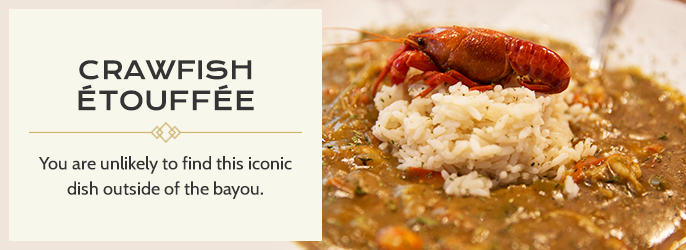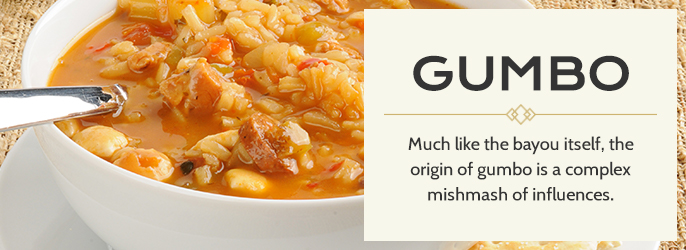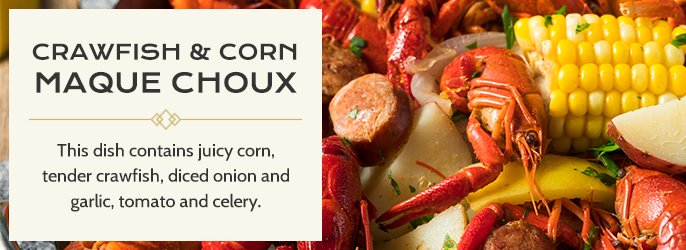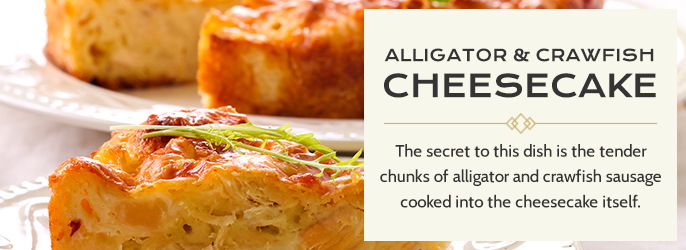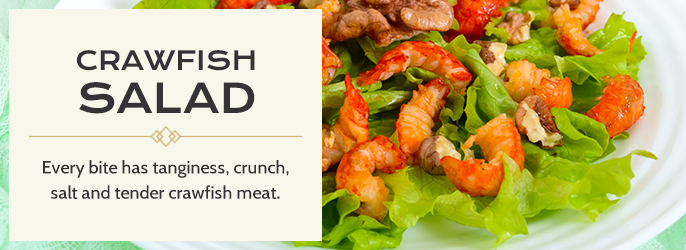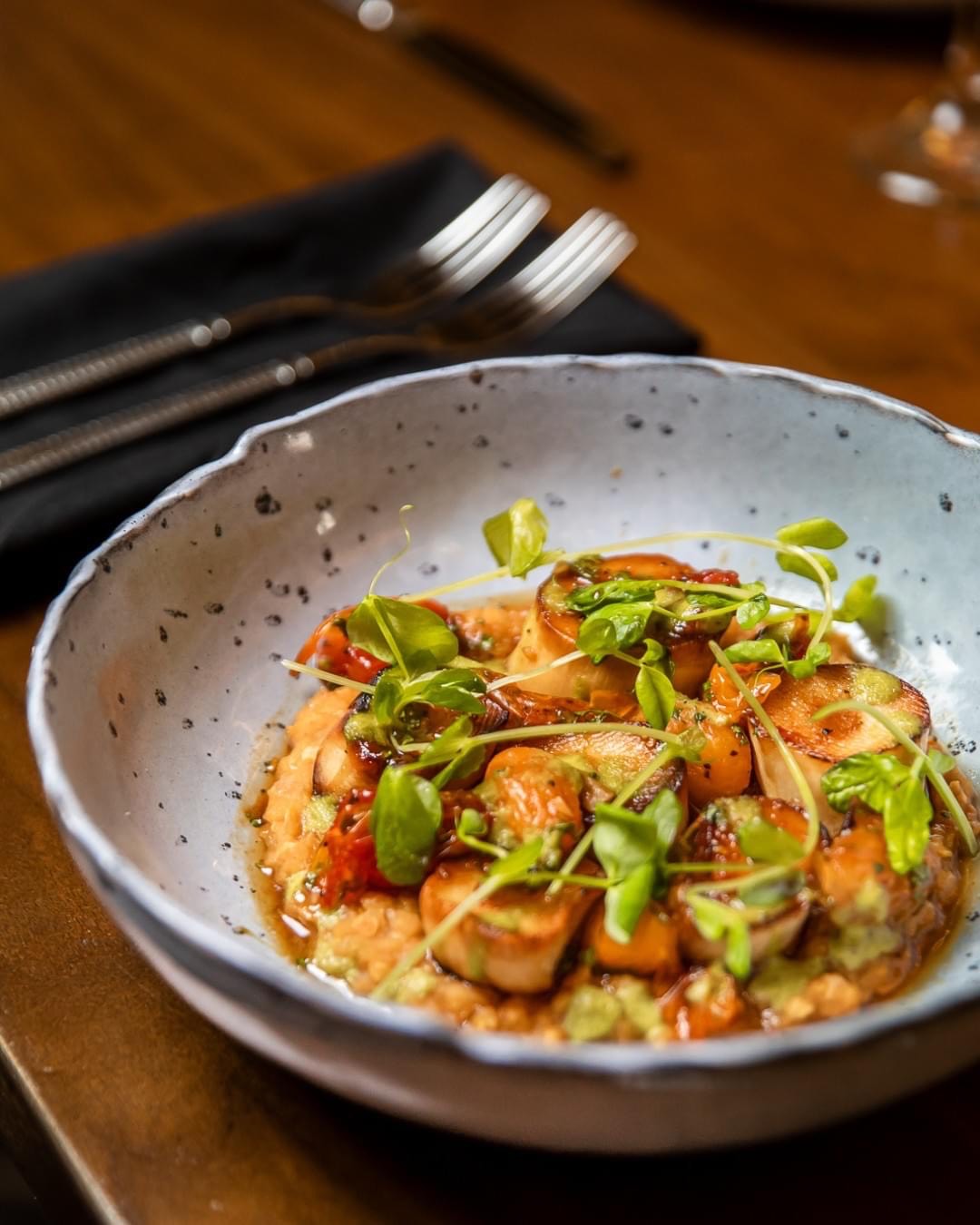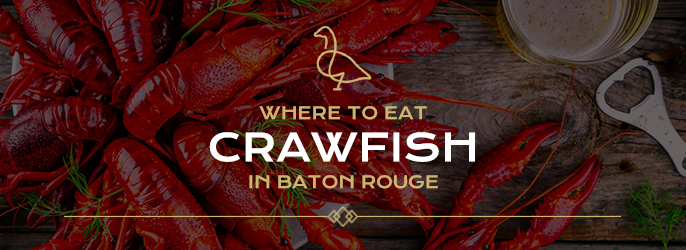
The Louisiana Bayou is beloved worldwide for its eclectic cuisine, which combines French, Cajun, African and Deep South culinary styles into a smorgasbord of different dishes. From étouffée to Po Boys, from gumbo to jambalaya, the food of the Louisiana Bayou has played a disproportionately large role in shaping the American culinary landscape.
The capital of Louisiana, Baton Rouge, has become an epicenter of culinary expertise. Today, we will examine one of its essential ingredients —the crawfish. Crawfish are small crustaceans that live in freshwater, making them especially suited to the water-logged landscape of the bayou.
The Acadians, who were ancestors of the Cajuns, are often given credit for bringing crawfish into Louisiana cuisine. However, Native Americans feasted on crawfish long prior to their arrival. As modern Louisiana began to form, the crawfish was seen as a poor man’s food. The price for a pound of the creatures remained low through the early 2000s, though a recent surge in popularity has brought them to a higher cost.
Today, crawfish are one of Louisiana’s greatest bits of culinary pride and joy. Affectionately referred to as “mudbugs,” crawfish are a delicious source of protein and the focus of many flavorful dishes in restaurants in Baton Rouge.
Let’s begin by examining the most popular recipes crawfish are a part of. If you come to visit or are lucky enough to call the area home, we’ll also recommend a few of the best crawfish places in the Baton Rouge, Louisiana, area.
- Crawfish Étouffée
- Crawfish Boil
- Crawfish Gumbo
- Crawfish Po Boy
- Crawfish and Corn Maque Choux
- Crawfish Boudin Balls
- Alligator and Crawfish Cheesecake
- Crawfish Salad
- Get the Best Crawfish at The Gregory
Crawfish Étouffée
This iconic dish is one of the bayou’s principal culinary creations. It is a meal you are unlikely to find outside of the bayou — and if you do, it just can’t be the same without that southern Louisiana magic. A crawfish étouffée prepared in Baton Rouge by a local is unlike anything you’ll find anywhere else.
For starters, étouffée takes plump, juicy crawfish and smothers them in a thick stew made from Creole seasonings and a yellow roux. The flavor is absolutely unforgettable — it is akin to a gumbo but has a fundamentally different flavor. To get an idea of its mouthwatering texture, consider that “étouffée” is derived from the term “to smother” in French. True to its name, crawfish étouffée smothers its namesake protein in thick, delicious sauce.
Don’t leave Baton Rouge without trying étouffée. It’s difficult to recommend one place over another, as every restaurant has its small variations on the theme. The dish typically starts with butter, onions, bell peppers, celery and herbs sautéed to perfection. Then come generous portions of fresh crawfish, seasoned with bay leaves. After the crawfish have cooked and soaked in the flavors, the mixture is seasoned further with salt, cayenne pepper, green onions and parsley. The result is a thick, aromatic stew ready to be served over rice.
Crawfish Boil
Every spring in Baton Rouge comes a magical occasion — the crawfish boil. This tradition sees every man, woman and child in the area stuffing themselves full of crawfish. It is a tradition locals adore. Picnic tables are lined with newspapers, buckets of scrumptious crawfish seasoned to perfection are brought out, and everyone eats until they can eat no more.
Luckily, locals like to share this tradition with others at boiled crawfish restaurants throughout the city. If you pass through Baton Rouge between the end of February and the beginning of June, seek out a crawfish boil. Enjoy the experience of eating pure crawfish with your hands, peeling and savoring every tender bite.
Downtown Baton Rouge is home to the annual Crawfish Boil competition, in which up to 45 teams compete for victory. Each year, around 11,000 lbs. of crawfish are boiled for the delight of attendees and the glory of competitors. Attendees eat the different crawfish and decide who the year’s Crawfish King will be. This event takes place in early May each year at the downtown Riverfront Plaza, and lots of fun family activities and music accompany the festival.
Crawfish Gumbo
Nothing says Louisiana like gumbo. Though there are many dishes that immediately evoke the area — jambalaya, étouffée and Po Boys, for example — gumbo remains the most dominant dish in the Louisiana food scene. It can be found on tables in wealthy and poor homes alike, as it transcends class barriers and permeates every corner of Louisiana culture.
Crawfish gumbo is perfect for the late spring, when both crawfish and okra abound in the warm sun and long days. This savory, spicy stew is served over rice and has an unmistakable depth to its flavors. It is rich and thick and full of spices, crawfish and vegetables. The roux for gumbo is often quite dark — chefs recommend you whisk it constantly to avoid burning, as you cook the flour as long as possible.
Much like the bayou itself, the origin of gumbo is a complex mishmash of influences. The word itself is thought to come from a West African term for “okra,” which for many years was used as a primary thickener in the dish. Filé, made from sassafras leaves, was a contribution of the Choctaws. Roux comes from the French tradition of cooking. The first references to it are made around 1800, and 1885’s La Cuisine Creole contained some different gumbo recipes involving chicken, okra, filé and a thickener.
Crawfish Po Boy
Those who like their sandwiches stacked sky-high with meat will adore the Louisiana Po Boy. The dish starts with deep-frying the crawfish. This can be done in traditional bread batter, beer batter, tempura or something spicy — tangy or spicy flavors are excellent variations. The sandwich is lined with crunchy romaine lettuce, sweet and thick slices of tomato, onions and whatever sauce one desires. Biting into this sandwich is a delight to the senses, with robust flavors complemented by wonderful crunching.
Po Boys have been a popular part of Bayou cuisine for many years, though their origin is the matter of some debate. The most popular story involves Clovis and Bennie Martin, 2 brothers who owned a restaurant in New Orleans in the 1920s. These two had once been streetcar operators, and when New Orleans streetcar operators went on a 4-month strike, the brothers went about feeding them for free. At their food stand, the brothers supposedly called those on strike “poor boys,” a name that has stuck.
Regardless of how they came about, Po Boys are a part of Louisiana food available nearly everywhere in the area. They are frequently made at home and can be found from roadside food trucks to fancy restaurants. They evoke a spirit of fierce pride in Louisianans — everyone has their own opinion about the best Po Boy in Baton Rouge. If you are hungry for big, satisfying bites of fried crawfish, the Po Boy may be the perfect vessel to deliver them to you.
Crawfish and Corn Maque Choux
The dish Maque Choux has Native American roots. This is yet another example of traditional bayou food in Baton Rouge’s rich cuisine and is likely a blend of Creole and Native American cooking styles. Its name is likely to have been created by Native Americans and rewritten with French phonetics.
This classic, savory side dish contains juicy corn, tender crawfish, diced onion and garlic, tomato and celery. All of these ingredients are cooked together in a pot, with the old technique being to braise it with bacon grease. Nowadays, substitutes such as cream, butter and oil are often used to make it a bit healthier and to add different flavors.
The vegetables in this dish are tender and succulent, simmered with chicken stock and full of spice and flavor. Salt is sprinkled over it, as well as black and red pepper and, in some cases, hot sauce or sugar. It can be served as is or in other creative ways such as pie crusts.
Crawfish Maque Choux is typically an accompaniment to a meal as opposed to the main entree, but it can also serve as a main meal’s base. Other variations on this delicious Louisiana staple include chicken, shrimp or other meats added in.
Crawfish Boudin Balls
Boudin balls are another irresistible curiosity of Louisiana food. In Baton Rouge, boudin balls come as golf ball-sized nuggets of meaty deliciousness, and crawfish boudin balls are a variation honoring the state’s freshwater friend. Boudin balls are made by blending delicious ingredients in a food processor, such as poblano, onion, celery, garlic and red pepper, and cooking them into an aromatic, spice medley.
This medley serves as the flavor base of an incredibly filling and delicious Cajun dish. Crawfish, green onions, herbs, butter, eggs, crumbs and rice mixture are cooked into balls that whose taste and texture falls somewhere between crab cakes and hush puppies, filling you with their warmth and mouth-watering tenderness.
Making boudin balls with crawfish is actually a variation on an old recipe. Boudin is an Anglo-Norman term roughly translating to “blood sausage,” or a sausage made from entrails. Traditional boudin is wrapped in sausage casings from pork. The Cajun variation on blood sausage is pork or crawfish sausage rolled into a ball, and rice is used instead of milk. This is referred to as “boudin blanc,” which describes the lighter color of Cajun boudin as opposed to other varieties.
Interestingly, a British version of boudin is called “blood pudding.” The word “boudin” gradually turned into “pudding” in English. In any case, in Cajun territory, boudin is a delicious addition to any meal and is served light and rich.
Alligator and Crawfish Cheesecake
As you might have suspected after some reflection, either the “alligator and crawfish” or the “cheesecake” portion of this dish’s name is misleading.
The answer — it’s the cheesecake. While we have come to associate the term with the custardy dessert cake, this type of cheesecake resembles a frittata turned upside down. It is a cheesy, savory dish that has intrigued and amazed many an unsuspecting visitor. After all, where else in the world would you be able to order an item with alligator and crawfish in the title?
The secret to this dish is the tender chunks of alligator and crawfish sausage cooked into the cheesecake itself. These bites of meat are gems hidden in the cheesecake’s rich interior. In all actuality, this cheesecake is more like a crab cake than anything else — a crab cake made with crawfish, alligator and a supremely creamy gouda or other type of cheese. It is typically garnished with a cream sauce made of crawfish, herbs and butter. It truly might be one of the best appetizers in the world.
If you wonder whether you should try the alligator and crawfish cheesecake, we recommend it for those who like crab cakes. Alligator and crawfish are both essential to Louisiana’s identity. They are so beloved there is even an annual Crawfish & Gator Fest in the northern part of the state.
Crawfish Salad
Admittedly, Cajun cuisine is heavy fare. With ingredients like cream, sausage, butter and spices, a meal in Baton Rouge will fill you up.
When a lighter meal is required, such as an early lunch or just something to stay cool on a blazing hot day, try a crawfish salad. Variations include crawfish and mango salad, as well as other fruit combinations. They can be found as appetizers in certain restaurants around the city and will give you the Cajun experience without the Cajun food hangover.
Imagine a salad served over tender yellow rice with succulent crawfish tails and cool diced cucumbers. Sweet mangoes cut into cubes are buried throughout, as well as roasted cashew nuts, slivers of carrots and shredded lettuce. Add to this a dressing made of sunflower oil, coconut, lime, soy sauce and brown sugar, and you’ve got the perfect summer salad. Every bite has tanginess, crunch, salt and tender crawfish meat.
Come to The Gregory for Baton Rouge’s Finest Crawfish
The Gregory has earned the reputation of having some of Baton Rouge’s most delicious crawfish dishes. Located in the historic Watermark hotel, we offer brunch, lunch and dinner menus with the most inspired culinary creations anywhere in the city.
Try our crawfish cake for dinner, which is a fried crawfish cake topped with tarragon aioli and chili threads. Or spoon up a cup of our crawfish artichoke, a soup loaded with Louisiana crawfish, artichoke, lemon gremolata and roasted garlic. One of our most popular flatbreads is the Swamp, which we top with crawfish, piquant turtle sauce, alligator sausage, okra and a blend of mozzarella and provolone. Our Fess Pie also features our famous Louisiana crawfish garlic butter.
For brunch, fill up with our Josper’d Frittata. We pack this frittata with lumps of crawfish, shrimp and crab, as well as roasted vegetables, baked eggs and a cheddar cheese sauce. The dish is cooked in cast iron in a Josper oven. Another classic option on our brunch menu is the Crawfish Cheese Omelet, which packs an omelet full of crawfish, cheddar cheese, shiitake, spinach and french fries.
The Gregory is designed for unique, exquisite dining unlike anything else available around. With a beautiful ambiance and a location directly downtown, we are proud to offer an exceptional experience in an unforgettable location. Enjoy all Baton Rouge has to offer at The Gregory.


